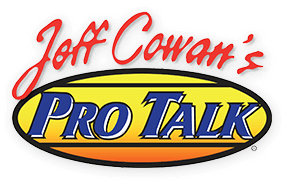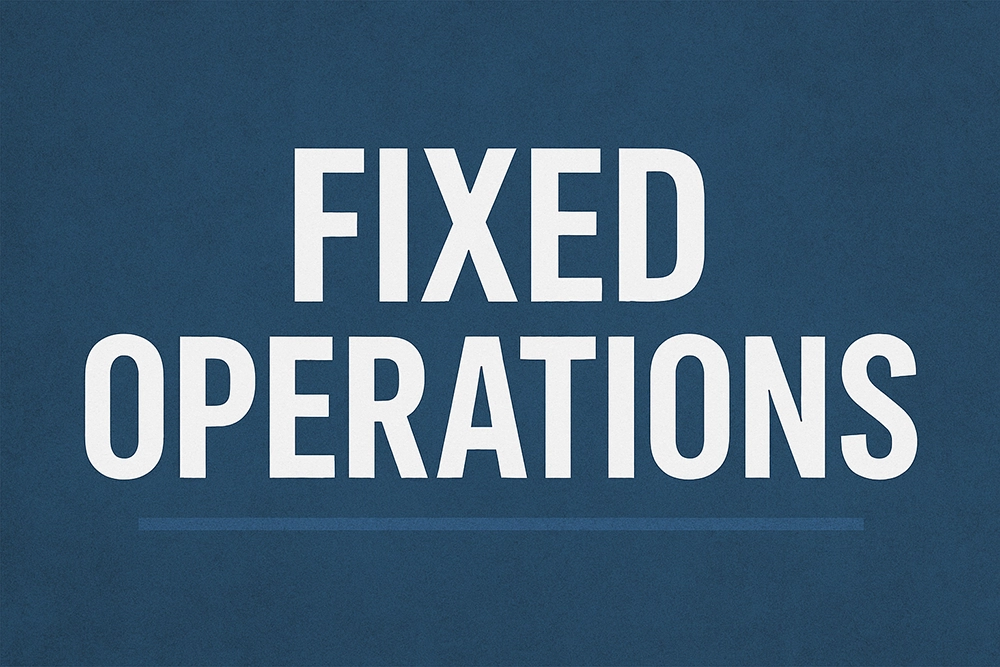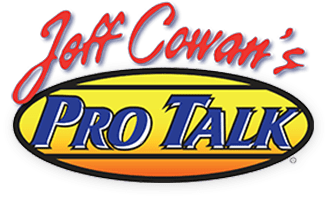In the complex world of automotive dealerships, fixed operations stands as the cornerstone of sustainable profitability and customer retention. Simply put, the term fixed operations (fixed ops) refers to the parts and service departments of a car dealership, which are essential for after-sales support and customer retention. Understanding the role of fixed operations is crucial for dealership success, as these departments often generate the majority of a dealership’s operating profits while building lasting customer relationships.
Understanding Fixed Operations: The Foundation of Dealership Stability
The car dealership fixed operations refer to the service department in a car dealership that focuses on maintaining and repairing vehicles. The automotive fixed operations are not involved in the direct sales of the automotive business. These departments are vital because they ensure that the dealership has a consistent revenue stream, even when vehicle sales might experience fluctuations due to market conditions or seasonal changes.
Fixed operations earned its name because these departments generate steady, predictable revenue streams that remain relatively stable compared to the variable nature of vehicle sales. While new car sales fluctuate based on market conditions, economic factors, and seasonal trends, customers consistently need vehicle maintenance, repairs, and replacement parts regardless of market conditions.
The Three Pillars of Fixed Operations
Service Department: The Customer Retention Engine
The service department represents the largest component of fixed operations, handling everything from routine maintenance to complex repairs. At Pro Talk, our focus is on showing dealerships, service managers, service advisors and their support staff how to substantially increase their revenues, improve survey scores and excel in customer retention through time tested and proven sales processes.
Service departments provide routine maintenance services like oil changes, tire rotations, and brake inspections, along with complex diagnostic and repair services. They serve as the primary customer touchpoint after the initial vehicle sale, creating opportunities to build long-term relationships that extend far beyond the original purchase.
Parts Department: Supporting Service Excellence
The parts department works hand-in-hand with the service department, ensuring availability of genuine manufacturer parts and accessories. This department manages inventory, processes warranty claims, and coordinates with service technicians to minimize repair delays and maximize customer satisfaction.
Parts departments also serve retail customers who prefer to perform their own maintenance, along with independent repair shops that rely on dealership parts availability. This dual revenue stream contributes significantly to overall fixed operations profitability.
Body Shop Operations: Collision and Aesthetic Services
A separate chapter is devoted to the unique characteristics of managing a Collision Center, highlighting the specialized nature of body shop operations within fixed operations. Body shops handle collision repair, paint work, and aesthetic restoration services, often working closely with insurance companies and providing another revenue stream for the dealership.
The Strategic Importance of Fixed Operations
Revenue Stability and Profitability
Because dealership Fixed Operations Departments (Service, Parts and Body Shop) account for the lion’s share of operating profits. A healthy and profitable Fixed Operations Department means a healthy dealership. This stability becomes particularly valuable during economic downturns when new vehicle sales decline, as customers continue to maintain and repair their existing vehicles.
Fixed operations typically operate with higher profit margins than vehicle sales, making these departments essential for overall dealership financial health. The recurring nature of service needs creates predictable revenue streams that support business planning and investment decisions.
Customer Retention and Loyalty Building
Car dealership’s fixed operations departments serve a vital purpose. They helps the dealership retain customers and earn repeat sales. The 2018 Service Industry Study from Cox Automotive found that car buyers who utilized a dealership’s fixed operations after making a purchase were more likely to return for future vehicle purchases.
Fixed operations departments create multiple touchpoints with customers throughout their vehicle ownership experience. Each positive service interaction reinforces the customer’s relationship with the dealership, increasing the likelihood of future vehicle purchases from the same dealer.
Fixed Operations vs. Variable Operations
Car dealerships balance a broad array of operations to sustain growth and profitability. These can be broken into fixed operations, focusing on maintenance, repair, and parts, and variable operations automotive, addressing immediate revenue drivers like vehicle and aftermarket sales.
Understanding this distinction is crucial for dealership management. The dealership variable operations refer to revenue-generating processes that are tied directly to vehicle sales. While variable operations drive immediate revenue through vehicle sales, fixed operations provide the stability and customer relationships that ensure long-term success.
Leadership and Management in Fixed Operations
The Fixed Operations Manager Role
A Fixed Operations Manager is a pivotal figure in a car dealership, responsible for overseeing the service and parts departments. Their primary role is to ensure that these departments run smoothly and profitably. They oversee the service, parts, and body shop departments of an automotive dealership or repair facility. Their main task is to ensure that all aspects of these departments operate efficiently, profitably, and in alignment with the dealership’s goals.
Fixed operations managers coordinate workflow between departments, manage staff schedules and performance, oversee inventory management, and ensure compliance with manufacturer requirements. They also play crucial roles in customer satisfaction initiatives and revenue optimization strategies.
Key Performance Metrics
They manage the workflow in the service area, supervise the parts inventory, and set goals for performance metrics such as customer satisfaction and revenue generation. Successful fixed operations management requires careful attention to various metrics including:
- Customer satisfaction survey scores
- Revenue per repair order
- Labor utilization rates
- Parts inventory turnover
- Service advisor productivity
- Technician efficiency ratings
Modern Challenges and Opportunities
Technology Integration
Today’s fixed operations departments must adapt to rapidly evolving automotive technology, from electric vehicles to advanced driver assistance systems. This requires ongoing technician training, specialized diagnostic equipment, and updated service procedures.
Digital tools now enable more efficient appointment scheduling, customer communication, and workflow management. Fixed operations departments that embrace these technologies often see improved efficiency and customer satisfaction scores.
Workforce Development
Establishes and maintains good working relationships with vocational and technical schools to enhance personnel recruitment and training. The automotive industry faces ongoing challenges in recruiting and retaining skilled technicians, making workforce development a critical component of fixed operations success.
Progressive fixed operations departments invest in ongoing training programs, competitive compensation packages, and career development opportunities to attract and retain top talent.
Best Practices for Fixed Operations Excellence
Customer-Centric Approach
Stevens emphasizes the importance of making first-time customers feel valued from the start. “You’ll customize those offers so when a customer is a new customer to the dealership, the advisor has a chance to give that offer to the first-time clients, give them that wow factor,” he explains.
Successful fixed operations departments prioritize customer experience through personalized service, clear communication, and value-added offerings that exceed customer expectations.
Operational Integration
At majority of car dealerships, the sales and fixed operations departments are independent and function separate from one another. Dealership fixed ops (parts, service, and body shop) stands on its own, and, despite this industry standard, the fragmentation could take a toll on a dealership’s profitability and productivity.
Forward-thinking dealerships break down these silos, creating integrated operations that maximize customer lifetime value and cross-selling opportunities.
The Future of Fixed Operations
As the automotive industry continues evolving with electric vehicles, autonomous driving technology, and changing consumer preferences, fixed operations must adapt accordingly. This evolution presents both challenges and opportunities for progressive dealerships willing to invest in training, technology, and customer service excellence.
With evolving technology, dealerships need to optimize these operations to remain competitive and profitable in an increasingly complex marketplace.
Conclusion: Fixed Operations as Strategic Advantage
Fixed operations represents far more than just service and parts departments—it’s the foundation of sustainable dealership success. This role focuses on ensuring efficiency, profitability, and customer satisfaction in areas like vehicle maintenance, repairs, and inventory management.
Dealerships that recognize fixed operations as a strategic advantage, rather than just a support function, position themselves for long-term success in an increasingly competitive automotive marketplace. The combination of stable revenue streams, customer retention opportunities, and profit generation makes fixed operations essential for any successful automotive dealership operation.
Frequently Asked Questions (FAQs)
1. What departments are included in fixed operations?
Fixed operations typically includes three main departments: the service department (handling maintenance and repairs), the parts department (managing inventory and parts sales), and the body shop or collision center (providing paint and body repair services). Some dealerships may also include related services like detail shops or tire centers.
2. Why is it called “fixed” operations?
The term “fixed” refers to the stable, predictable nature of revenue generated by these departments. Unlike variable operations (vehicle sales) that fluctuate with market conditions, fixed operations provide consistent income streams as customers regularly need maintenance, repairs, and parts regardless of economic conditions.
3. How much profit do fixed operations generate for dealerships?
Fixed operations departments typically account for the majority of a dealership’s operating profits, often 60-80% or more. While exact percentages vary by dealership size and market conditions, fixed operations generally operate with higher profit margins than vehicle sales, making them crucial for overall profitability.
4. What skills are needed to manage fixed operations successfully?
Successful fixed operations management requires a combination of automotive technical knowledge, business acumen, leadership skills, and customer service expertise. Managers must understand service processes, inventory management, financial metrics, staff development, and customer satisfaction principles to excel in this role.
5. How does fixed operations impact customer retention?
Fixed operations serves as the primary customer touchpoint after vehicle purchase, creating multiple opportunities to build relationships and demonstrate value. Customers who have positive fixed operations experiences are significantly more likely to return to the same dealership for future vehicle purchases, parts, and service needs, making these departments crucial for long-term customer retention.








 Based in the USA
Based in the USA